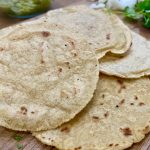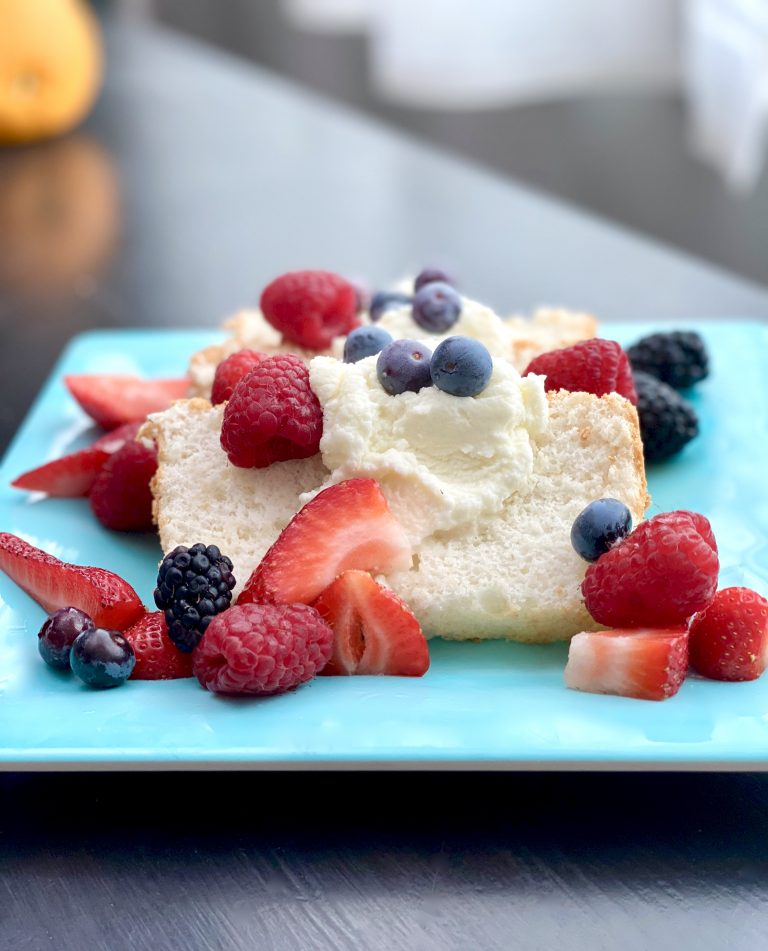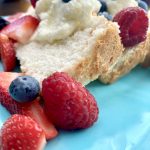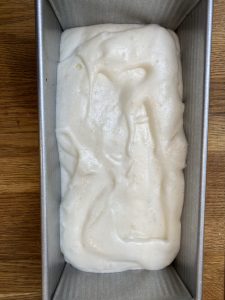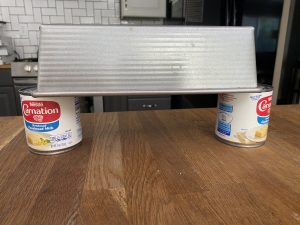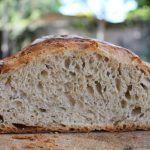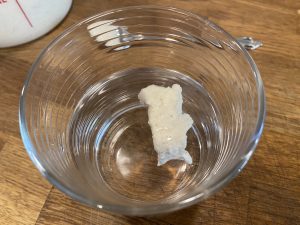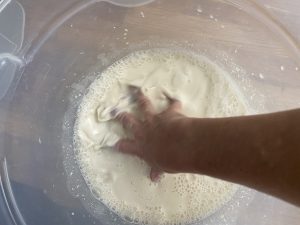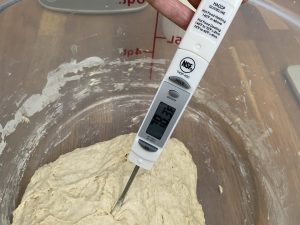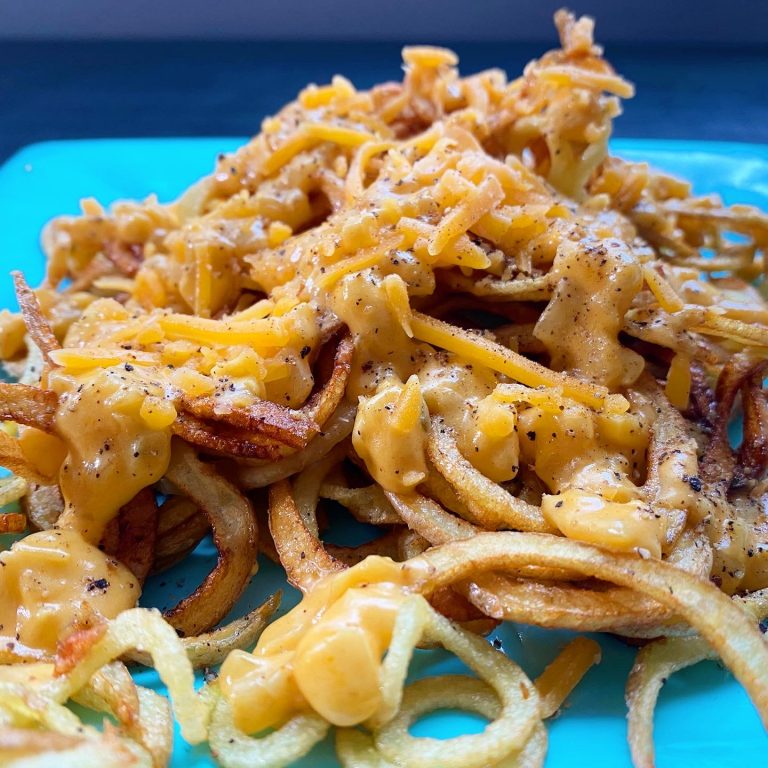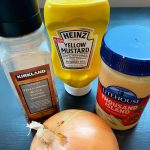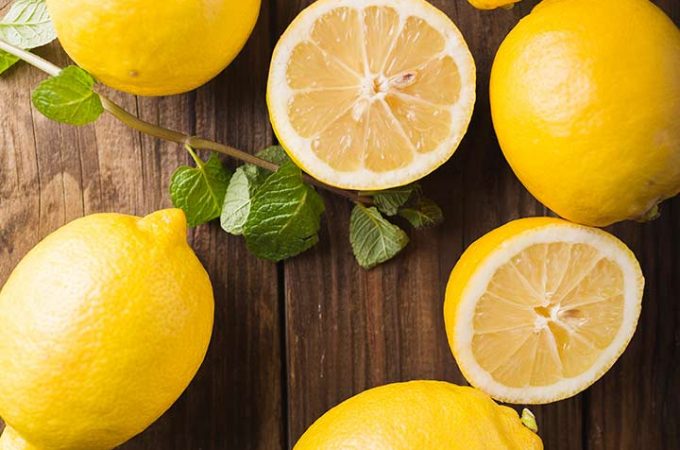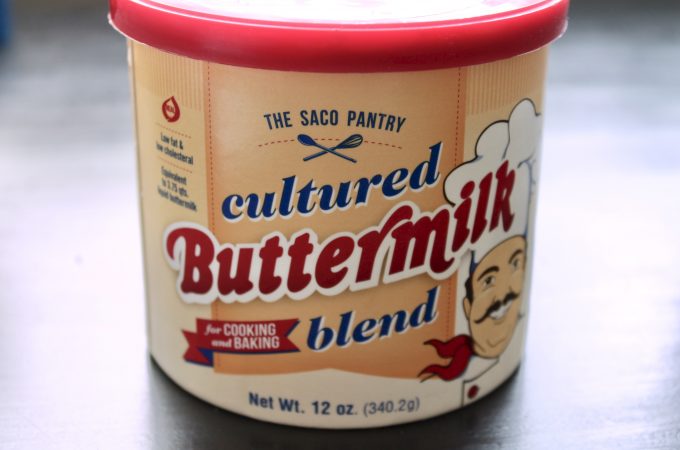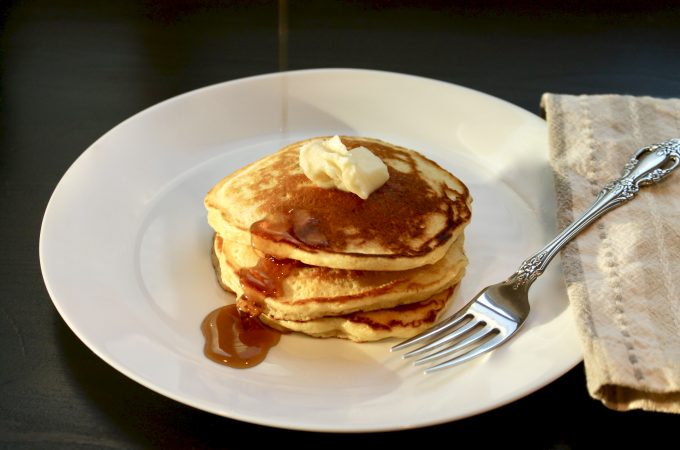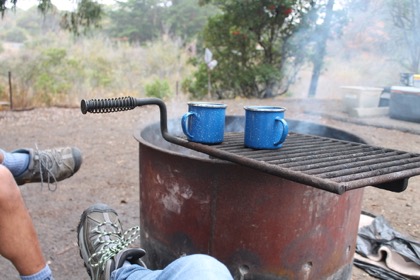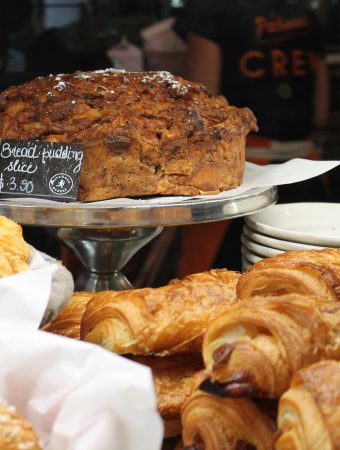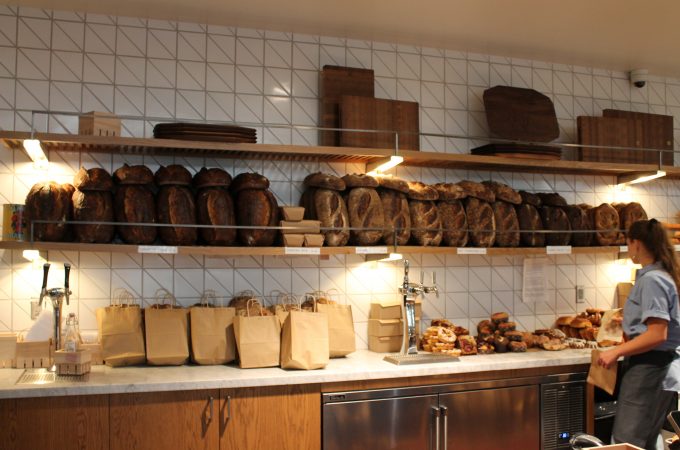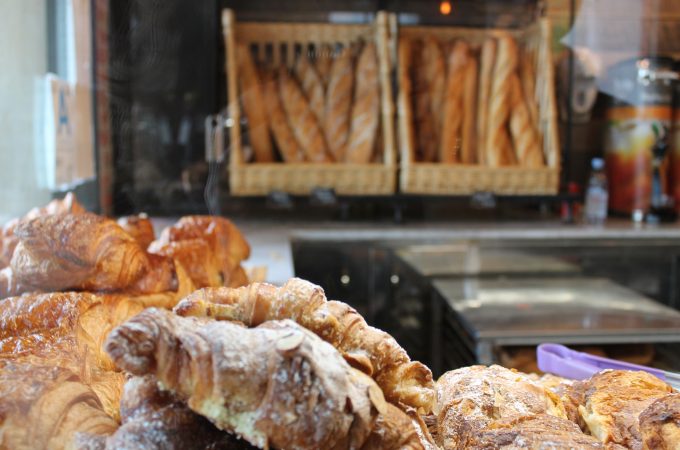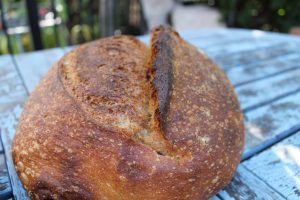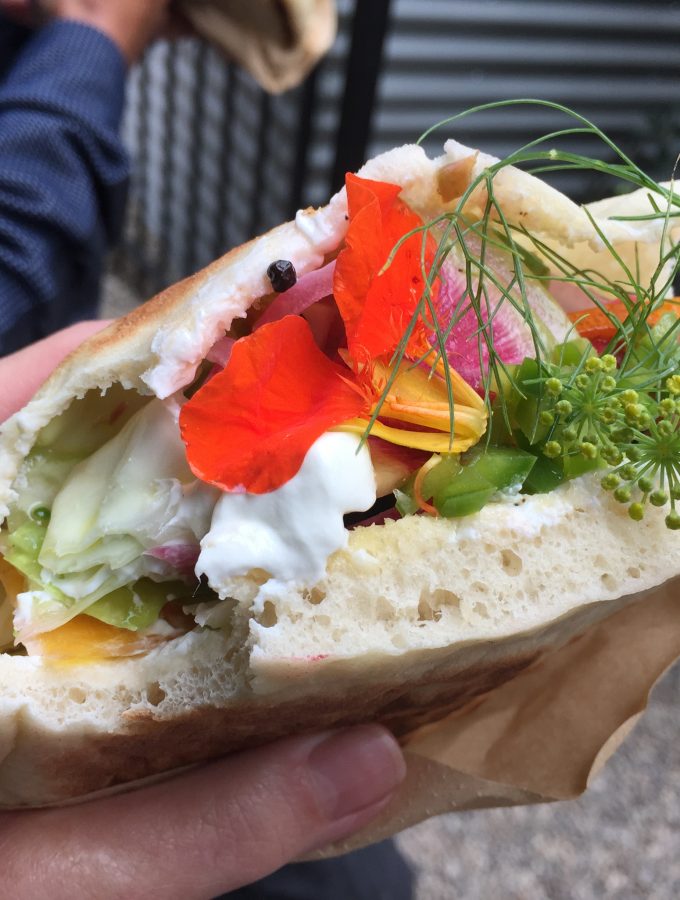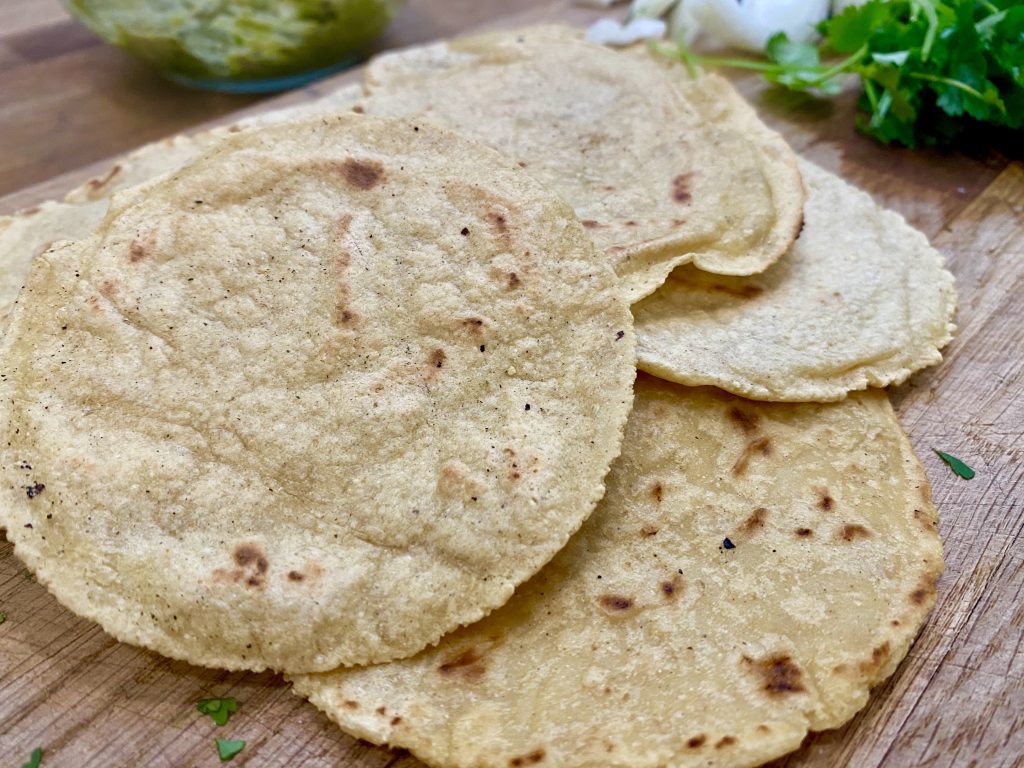
It’s Easy. Really.
If you learned one kitchen skill to change all your Mexican food recipes, this would be it. Homemade corn tortillas, made from scratch. And it’s so much easier than you might think. Once you learn this very easy recipe you’ll rarely buy tortillas from the end cap at the grocery store again.
Take the plunge and buy a cast iron tortilla press. You’ll be happy you have it. For around $20 it’s a small tool and you can tuck it away in the bottom of your pantry. I use an 8″ Victoria brand tortilla press and line it with a zip top bag. (Wash the plastic bag to re-use for the next batch of tortillas.)
Downsizing
Walking through the grocery store last week I noticed that my cart was more empty than it has ever been. No more need to pick up bread, pasta or tortillas. Over the years I’ve learned to bake bread and English muffins. I make pasta of all kinds, and pizza dough too. And using this recipe I mix up homemade tortillas in no time at all.
Having a good supply of organic flour and corn masa at the ready means you can put together dinner easily without making a last minute dash to the grocery store. I have a very small Los Angeles kitchen which means not a lot of room for gadgets and extra tools. And honestly, you don’t need ’em for this.
Be a little patient. If they aren’t just right the first time around, I promise, you’ll get it. Understanding the best consistency of the dough comes quickly. You’ll know you’ve got it right when the dough feels like Play-Do and doesn’t stick to your hands. The press takes a little getting used to but lining it with a zip top bag will make the job sooo much easier.
Tip: Cut off the zipper of a zip top bag then slice down the two sides of the bag so that it opens like a book. Lay the bag inside the press, open, set your ball of dough on the open bag, close it, press, open and toss the flattened dough on the griddle.
I hope you will try this recipe and discover the convenience of making your own homemade corn tortillas.
Homemade Corn Tortillas
Equipment
- Cast iron tortilla press
- Zip top bag
Ingredients
- 2 cups 2 cups masa harina Make sure to buy Nixta Masa. NOT INSTANT. It's fairly readily available in grocery stores throughout the US and always available in Latin grocery stores.
- 1 tsp kosher salt
- 1 ½ cup hot water not boiling (about 120°)
Instructions
- Cut the sides of a zip top bag along the seams. Leave the bottom seam uncut. Cut off the zipper. The bag should now open and close from the bottom seam, like a book. Lay the bag inside of your tortilla press until ready to use.
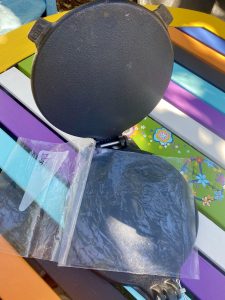
- Combine masa harina and salt in a large mixing bowl.
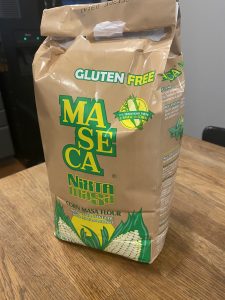
- Add 1½ cups hot water and stir till it just comes together but still has dry corn flour. Then ditch the spoon and get your hands in there. Knead the dough, squeezing, pressing down with the heel of your palm, then folding over. Knead for 3 minutes. Cover bowl with a damp tea towel and let it rest for 5 minutes.
- After 5 minutes knead the dough again for about 3 more minutes. The dough should not stick to your hands. It should feel like play-do or that magic sand stuff that kids play with.
- Break off pieces of dough and roll into ping pong sized balls.
- Heat a griddle or flat skillet till very hot. Add a couple drops of canola oil to the skillet and brush around to evenly coat.
- Use a cast iron tortilla press to get the most consistently even and perfectly round tortillas.
- Heat a griddle or flat skillet till very hot. Add a couple drops of canola oil to the skillet and brush around to evenly coat.
- Lay the cut zip top bag inside the tortilla press. Open it like a book and place one of the balls of dough on the bag. Fold the bag over onto the dough ball and then press the ball with the iron press. Open the press and lift out the flattened dough, open the bag and peel off into your hand. Then lay the tortilla on the hot skillet.
- Heat for about 1 minute until golden brown spots form on the bottom of the tortilla. Flip it and do the same on the other side. Remove from griddle and keep warm in a tortilla warmer or wrap up in a clean tea towel. Fold the towel over each tortilla so they are all wrapped up inside but not stacked on top of each other. When the towel is full, start another.
- Use tortillas immediately while still warm or store them in a sealed plastic bag in the refrigerator for up to 3 days. Around my house any leftover tortillas get eaten within a day so I just leave them on the counter wrapped in the towel and everybody can grab 'em when the craving hits.
